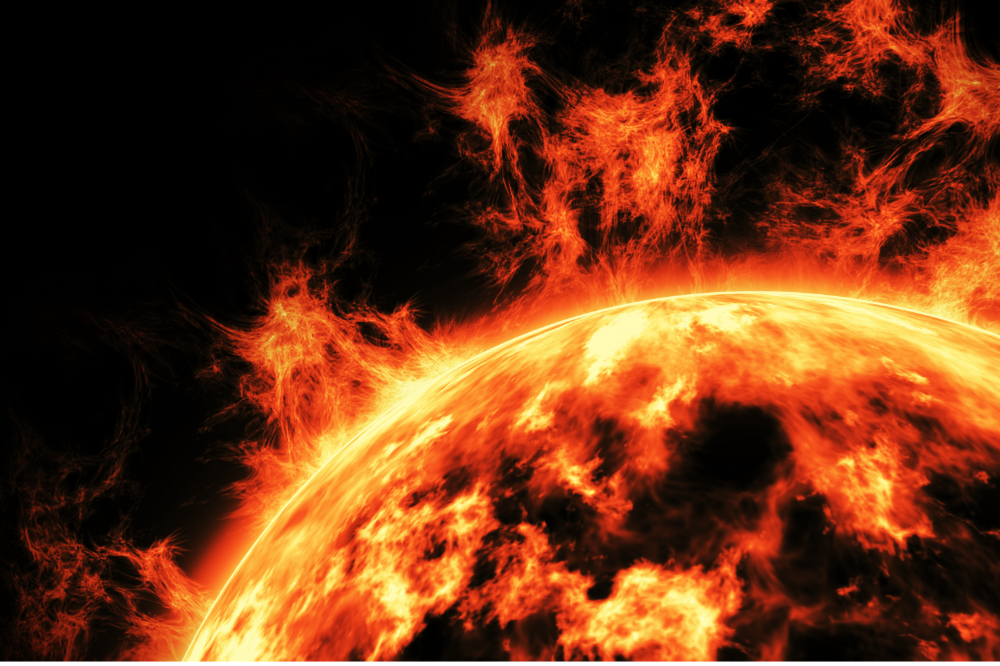Introduction
In the vast expanse of our solar system, the Sun reigns as the central powerhouse, influencing not just the planets orbiting it, but also the very fabric of space. One of the most fascinating and impactful phenomena originating from our Sun is the solar flare. These intense bursts of radiation and energy can have profound effects on our planet, particularly on modern technology and infrastructure.
Understanding solar flares is crucial because their reach extends far beyond the celestial spectacle of auroras. When a solar flare erupts, it has the potential to disrupt satellite communications, impair navigation systems, and even cause significant disturbances to power grids on Earth. As our reliance on technology grows, so does the importance of comprehending these solar events and their potential consequences.
I recently saw a YouTube video where Tucker Carlson interviews Dennis Quaid about the potential and likely dangers ahead of us.
What Are Solar Flares?
Solar flares are sudden, intense bursts of radiation emanating from the Sun’s atmosphere. They occur when magnetic energy built up in the solar atmosphere is suddenly released, causing radiation to be emitted across the electromagnetic spectrum. This energy release is the result of the Sun’s complex magnetic field lines becoming tangled and twisted, leading to a massive explosion. Solar flares are classified into three categories based on their intensity: X-class flares are the most powerful, followed by M-class and C-class flares.
The Science Behind Solar Flares
Solar flares are a part of the Sun’s activity cycle, which spans approximately 11 years. During this cycle, the frequency and intensity of solar flares vary, peaking during the solar maximum and decreasing during the solar minimum. Solar flares are closely associated with sunspots, which are temporary phenomena on the Sun’s photosphere that appear as spots darker than the surrounding areas. These spots are regions of intense magnetic activity, and their presence often signals the potential for solar flares.
Impact of Solar Flares on Earth
When solar flares reach Earth, they can have immediate and significant effects on our atmosphere. One of the most visible impacts is the creation of auroras, also known as the Northern and Southern Lights. These are caused by the interaction of solar particles with Earth’s magnetic field, leading to spectacular displays of light in the polar regions.
However, the effects of solar flares extend beyond these beautiful light shows. The increased ionization in the ionosphere can disrupt satellite communications, affecting GPS signals, radio communications, and satellite operations. Astronauts and space missions are also at risk, as exposure to heightened radiation levels can pose serious health hazards.

No electricity
Historical and Recent Examples
of Solar Flares Hitting Earth
The Carrington Event (1859)
- Intensity: Estimated at X45
- Description: The most powerful solar storm on record, named after British astronomer Richard Carrington who observed the flare.
- Impact: Telegraph systems worldwide experienced widespread disruptions and failures. Auroras were visible as far south as the Caribbean.
- Societal Impact: Although technology was limited, the event highlighted the potential for significant technological disruptions.
- It is thought that this kind of large event may happen every 500 years.
The 1989 Quebec Blackout
- Intensity: X15
- Description: A powerful solar storm caused by an X15-class flare.
- Impact: Induced geomagnetic currents disrupted the Hydro-Québec power grid, causing a nine-hour blackout that affected millions.
- Societal Impact: Highlighted vulnerabilities in modern power grids and spurred research into protective measures.
The Halloween Solar Storms (2003)
- Intensity: X17.2 and X10
- Description: A series of intense solar flares and coronal mass ejections (CMEs) in late October and early November 2003.
- Impact: Disrupted satellite communications, GPS systems, and aviation operations. Auroras were seen as far south as Texas and Florida.
- Societal Impact: Resulted in satellite malfunctions and minor power grid disturbances, emphasizing the need for better prediction and protection systems.
The St. Patrick’s Day Storm (2015)
- Intensity: X2.1
- Description: An X2.1-class flare caused significant geomagnetic storming on March 17, 2015.
- Impact: Disrupted GPS and radio communications. Auroras were visible across Europe and North America.
- Societal Impact: Caused minor disruptions in communication systems, reinforcing the importance of preparedness for such events.
Impact on Power Grids
One of the most critical concerns regarding solar flares is their impact on power grids. Solar flares can induce geomagnetic storms when their energy interacts with Earth’s magnetic field. These storms create geomagnetically induced currents (GICs) in power lines, which can overload transformers and other electrical infrastructure. The 1989 Quebec blackout is a notable example, where a powerful geomagnetic storm caused a massive power outage, affecting millions of people.
Modern power grids are particularly vulnerable due to their interconnected nature and reliance on advanced technology. The potential risks include overloading and damaging transformers, leading to widespread power outages and significant economic losses.
Mitigation and Preparedness
To mitigate the impact of solar flares, monitoring and predicting these events are essential. Space weather agencies like NOAA and NASA play a crucial role in tracking solar activity using satellites such as the Solar and Heliospheric Observatory (SOHO) and the Solar Dynamics Observatory (SDO). These monitoring systems provide early warnings of potential solar flares, allowing for timely protective measures.
Protective measures for power grids include improving grid design and infrastructure to withstand geomagnetic storms, developing protocols for grid operators to respond to solar flare warnings, and investing in research to enhance our understanding of solar phenomena. Public awareness and preparedness are also vital, as informed communities can take necessary precautions to minimize disruption during solar events.
Conclusion
Solar flares are powerful natural phenomena with the potential to disrupt modern technology and infrastructure significantly. Understanding their nature and impacts is crucial for safeguarding our satellites, communication systems, and power grids. Ongoing research, monitoring, and preparedness are essential to mitigate the risks posed by solar flares. By staying informed and taking proactive measures, we can ensure the resilience of our technological infrastructure against the Sun’s formidable outbursts.
Dig a well, grow your food, and learn to survive.
References
- National Aeronautics and Space Administration (NASA). “What is a Solar Flare?” https://www.nasa.gov/mission_pages/sunearth/news/flare-classifications.html
- National Oceanic and Atmospheric Administration (NOAA). “Space Weather Prediction Center.” https://www.swpc.noaa.gov/
- Solar and Heliospheric Observatory (SOHO). “SOHO – Solar and Heliospheric Observatory.” https://sohowww.nascom.nasa.gov/
- Solar Dynamics Observatory (SDO). “Solar Dynamics Observatory.” https://sdo.gsfc.nasa.gov/
- North American Electric Reliability Corporation (NERC). “Geomagnetic Disturbance Planning Guide.” https://www.nerc.com/pa/Stand/Geomagnetic%20Disturbance%20Planning%20Guide%20Task%20Force%20DL/Geomagnetic_Disturbance_Planning_Guide.pdf




